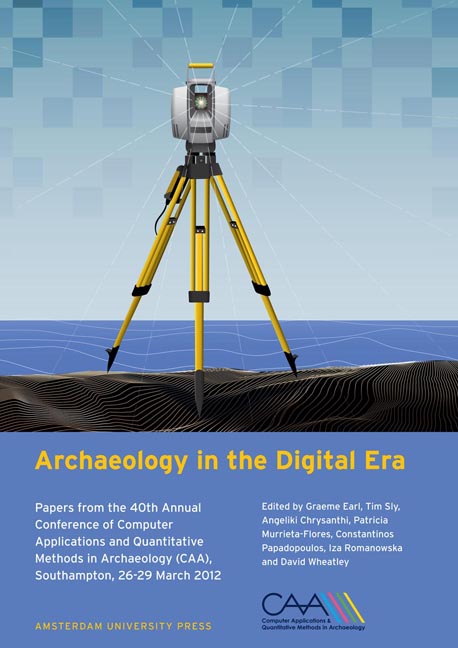 Archaeology in the Digital Era
Archaeology in the Digital Era ‘Tangible Pasts’: User-centred Design of a Mixed Reality Application for Cultural Heritage
Published online by Cambridge University Press: 16 February 2021
Summary
Abstract:
Tangible Pasts is a Mixed Reality (MR) prototype that combines a tangible interface with virtual content. The physical object, a book, enables users to manipulate the virtual models in real time by their actions performed in the physical world. This paper presents an overview of designing the prototype, and the evaluation of this application by participants who tested its usability and interpretive value. It also presents some preliminary results of the second round of design and evaluation. The attention is stressed on the importance of performing constant user evaluations in parallel to the design of the prototype in order to produce an application that is usable and of benefit to archaeological research and interpretation of cultural heritage knowledge.
Keywords:
Tangible Pasts, Mixed Reality, Iterative Design, User Evaluation
Introduction
This paper presents the preliminary results of a tangible prototype interface for cultural heritage dissemination in a Mixed Reality (MR) environment. This research project was developed in parallel to our research work, which is related to several aspects of computer visualisation, interpretation and presentation of archaeological material, with the purpose to explore available MR platforms from a human and user-centred perspective. The design of this application, which utilises available technologies, was structured around three main research questions: a) How can we provide an intuitive user-friendly application for cultural heritage, which blends virtual imagery with the actual world, where users operate and interact with the information? b) How effectively can archaeological information and visual interpretations of the past be disseminated through such technologies? c) How can user evaluations in early stages inform archaeological interpretive design? Based on the principles of iterative design the prototype was designed, evaluated, analysed, refined and reevaluated. This cyclic process will continue until any issues identified by participants in this research will be kept at a minimum. This project Mali also employ new technologies as they become available to the public, attempting to smoothly combine the natural process of reading with MR content.
Background and Objectives of Tangible Pasts
A significant number of collaborative projects have already started to exploit the real potential of MR technologies and develop new methodologies in interpretive archaeology, cultural heritage sites and museums (Noh et al. 2009; Champion 2011).
- Type
- Chapter
- Information
- Archaeology in the Digital EraPapers from the 40th Annual Conference of Computer Applications and Quantitative Methods in Archaeology (CAA), Southampton, 26-29 March 2012, pp. 31 - 39Publisher: Amsterdam University PressPrint publication year: 2014
